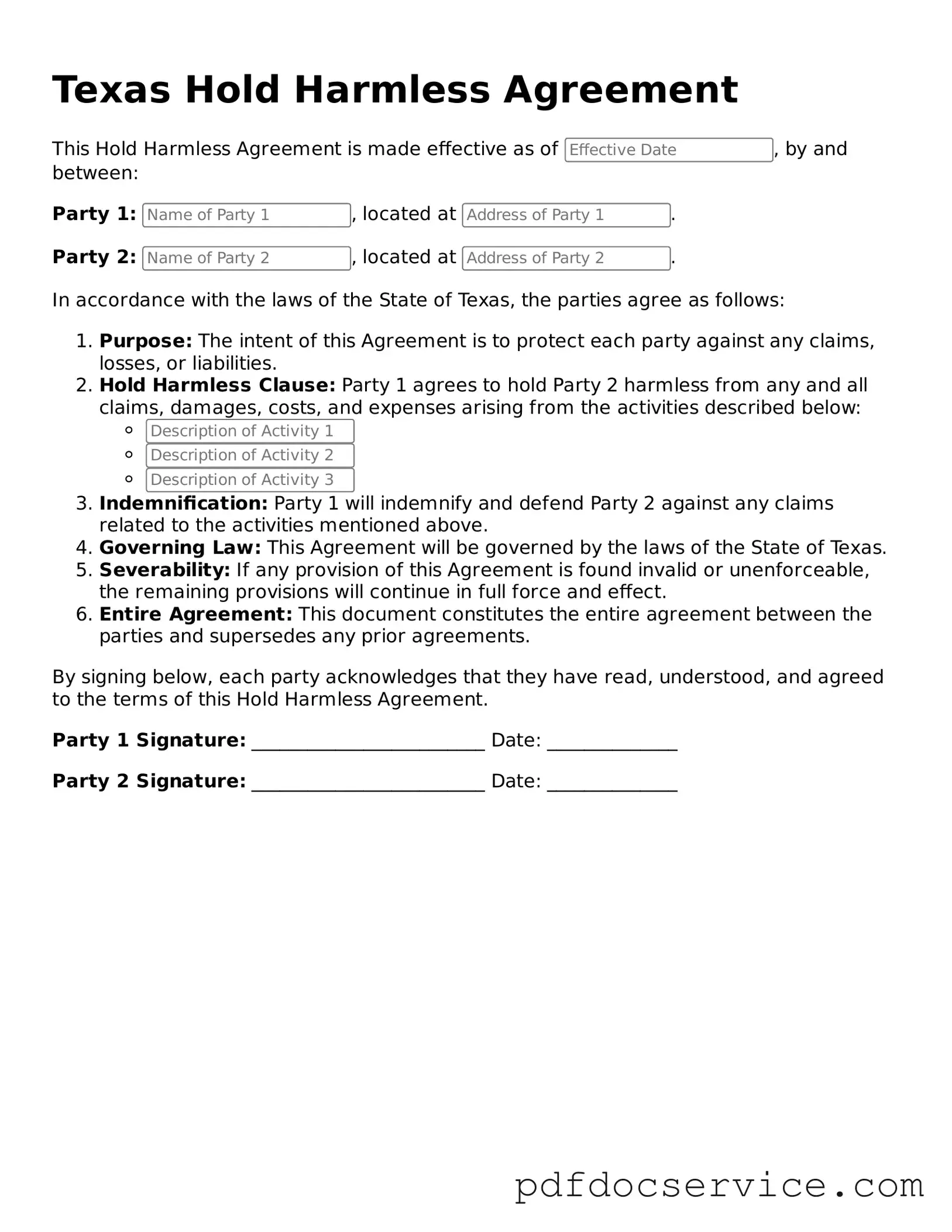What is a Texas Hold Harmless Agreement?
A Texas Hold Harmless Agreement is a legal document that protects one party from liability or claims resulting from the actions or negligence of another party. This agreement is often used in various contexts, such as construction projects, rental agreements, and event planning, where one party may face potential risks associated with the activities of another.
Who typically uses a Hold Harmless Agreement?
Various individuals and organizations utilize Hold Harmless Agreements. Common users include:
-
Contractors and subcontractors in the construction industry
-
Property owners renting out space for events
-
Businesses hosting activities that may pose risks
-
Individuals participating in recreational activities
What are the key components of a Hold Harmless Agreement?
A Hold Harmless Agreement generally includes the following elements:
-
Identification of parties:
Clearly states who is involved in the agreement.
-
Scope of liability:
Defines the extent of the liability being waived.
-
Indemnification clause:
Outlines the responsibilities of each party in case of claims.
-
Duration:
Specifies how long the agreement is in effect.
-
Signatures:
Requires signatures from all parties to make the agreement enforceable.
Is a Hold Harmless Agreement legally binding?
Yes, a Hold Harmless Agreement can be legally binding if it meets certain criteria. It must be clear, specific, and voluntarily signed by all parties involved. However, courts may not enforce the agreement if it is deemed overly broad or if it violates public policy.
Can a Hold Harmless Agreement protect against gross negligence?
Generally, Hold Harmless Agreements do not protect against gross negligence or willful misconduct. Courts often view such actions as too severe to be waived. It is important to understand the limitations of the agreement and ensure that it is not attempting to absolve one party from serious wrongdoing.
How do I create a Hold Harmless Agreement?
Creating a Hold Harmless Agreement involves several steps:
-
Determine the specific risks and liabilities to address.
-
Draft the agreement, ensuring clarity and specificity.
-
Consult with a legal professional to review the document.
-
Have all parties sign the agreement before any activities commence.
Can a Hold Harmless Agreement be revoked?
A Hold Harmless Agreement can be revoked or modified if all parties agree to the changes. This process typically requires a written amendment signed by everyone involved. It is advisable to consult with legal counsel to ensure that the revocation is handled correctly and does not leave any party exposed to liability.
What happens if a claim arises despite a Hold Harmless Agreement?
If a claim arises despite the existence of a Hold Harmless Agreement, the affected party may still need to defend against the claim. The agreement may provide a basis for seeking reimbursement or indemnification from the other party. The outcome will depend on the specific terms of the agreement and the circumstances surrounding the claim.
Where can I find a template for a Texas Hold Harmless Agreement?
Templates for Texas Hold Harmless Agreements can be found online through various legal websites, or you may consult with a legal professional to draft a customized agreement tailored to your specific needs. Ensure that any template you use complies with Texas law and addresses your particular situation.
